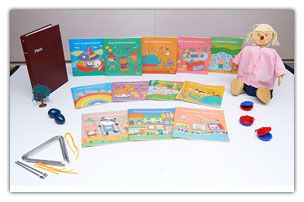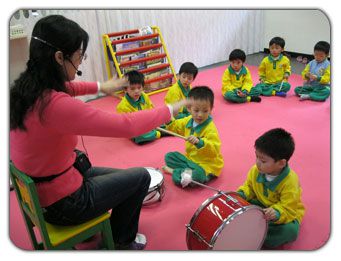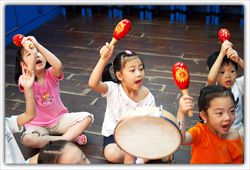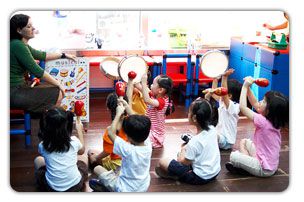

3 to 6
Primary, Junior, Senior Class

Textbook – 12 levels

Music plays an important role in the development of children from the time they are born. When children actively participate in music, they make the strongest connections and experience a rich sensory environment.
Intellectual Development
Music helps children to recognize patterns. This ability will help children develop their math, science and reading skills.
Physical Development
While doing yoga, children develop their motor skills, coordination and balance through the process of stretching, breathing and meditation.
Self-Expression
Music is a great way to allow children to express themselves. When children make their own music and dances, they will have the opportunity to develop their own style and interests.
Listening Skills
Children are required to listen carefully to instructions, words and melodies while listening to music, learning songs, learning to play a musical instrument and learning to dance. This will help them develop strong listening skills and concentration.

The curriculum is designed for the needs of children in different age groups. The course contents include:
1. Sing Along
a. Sing along with correct pitches
b. Use small piece of musical instruments
c. Play musical games and activities

d. Develop musical accompaniment ability
2. Rhythmic Learning
a. Develop stability in rhythmic movement
b. Turn body parts into musical instruments
c. Use self-made instruments as
accompaniment
d. Develop the ability of language
expression
e. Enhance multi-part choral works
3. Music Concepts
a. Differentiate same and different things
b. Differentiate slow and fast music
c. Differentiate high and low pitches
d. Differentiate strong and weak beats

4. Simulation
a. Encourage imagination
b. Develop sensitivity to different sounds
c. Enhance organizational ability
d. Develop storytelling ability
e. Promote impromptu musical creation
f. Appreciate different cultures
5. Spiritual Balance
a. Inspire music appreciation through listening to music and playing of an instrument
b. Discover peace and happiness in mind-body balance through yoga practices in
breathing and meditation

Warm Up:
The teacher tells stories or role-plays to activate children’s motivation and curiosity that leads them to use all their senses to explore what they hear, see, and touch.
Activity:
The course contents focus on songs and chants, musical concepts, gross motor activities, easy yoga, playing musical instruments, and music appreciation for different age groups of children. These activities aim to expose children to various musical activities, provide them a comprehensive sensory experience, and stimulate their music intelligence at the same time.
Closure:
Have children actively participate – to sing, play, clap, dance and remember movements, to feel, make, hear and memorize sounds and patterns. The teacher ends the class in a happy, fun, and relaxed atmosphere.

1. Children practice to play instruments in different volumes, pitches, musical quality,
and timbre to increase their sensitivity to sound patterns.
2. Children enjoy playing musical instruments, and this enhances their musical
sensitivity.
3. Children are enhancing physical, language, social-emotional, and cognitive
development while playing a variety of musical instruments.



